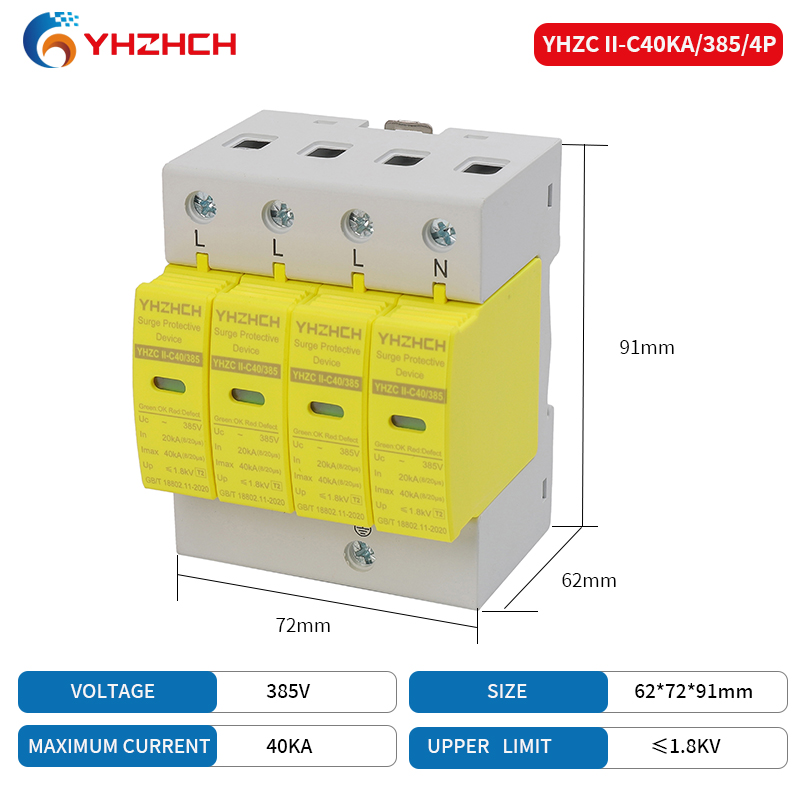The leakage current standard of surge protectors varies due to various factors, as follows:
For SPDs with metal oxide varistors (MOVs) as voltage limiting components and no other series parallel components
First measurement: The measured leakage current of SPD composed of a single MOV should not exceed the maximum value specified by the manufacturer. If the manufacturer does not claim leakage current, the measured value should not exceed 20 μ A. The measured leakage current of SPD with multiple MOVs connected in parallel should not exceed the maximum value specified by the manufacturer; If the manufacturer does not claim leakage current, the measured value should not exceed 20 μ A multiplied by the number of MOV valve plates. When the number of valve plates cannot be determined, the measured value of SPD shall not exceed 20 μ A.

Subsequent measurement: The measured leakage current of SPDs composed of single and multiple MOVs should not exceed 1 times the initial measurement value.
Reference standards for different scenarios: In general distribution lines, it is usually required that the leakage current of surge protectors be at μ A level. For example, in the protection scenarios of some high-precision instruments or important equipment with high requirements, it is desirable to minimize the leakage current as much as possible, preferably stable below 15 μ A. For some industrial environments with relatively high tolerance for leakage current, leakage currents below a few hundred μ A may be within an acceptable range, but this also needs to be comprehensively judged based on specific equipment requirements and specifications of surge protectors.
It should be noted that when measuring the leakage current of surge protectors, a dedicated lightning protection component tester or leakage current tester should be used, and the operation should be carried out according to the requirements of relevant standards and instructions.


